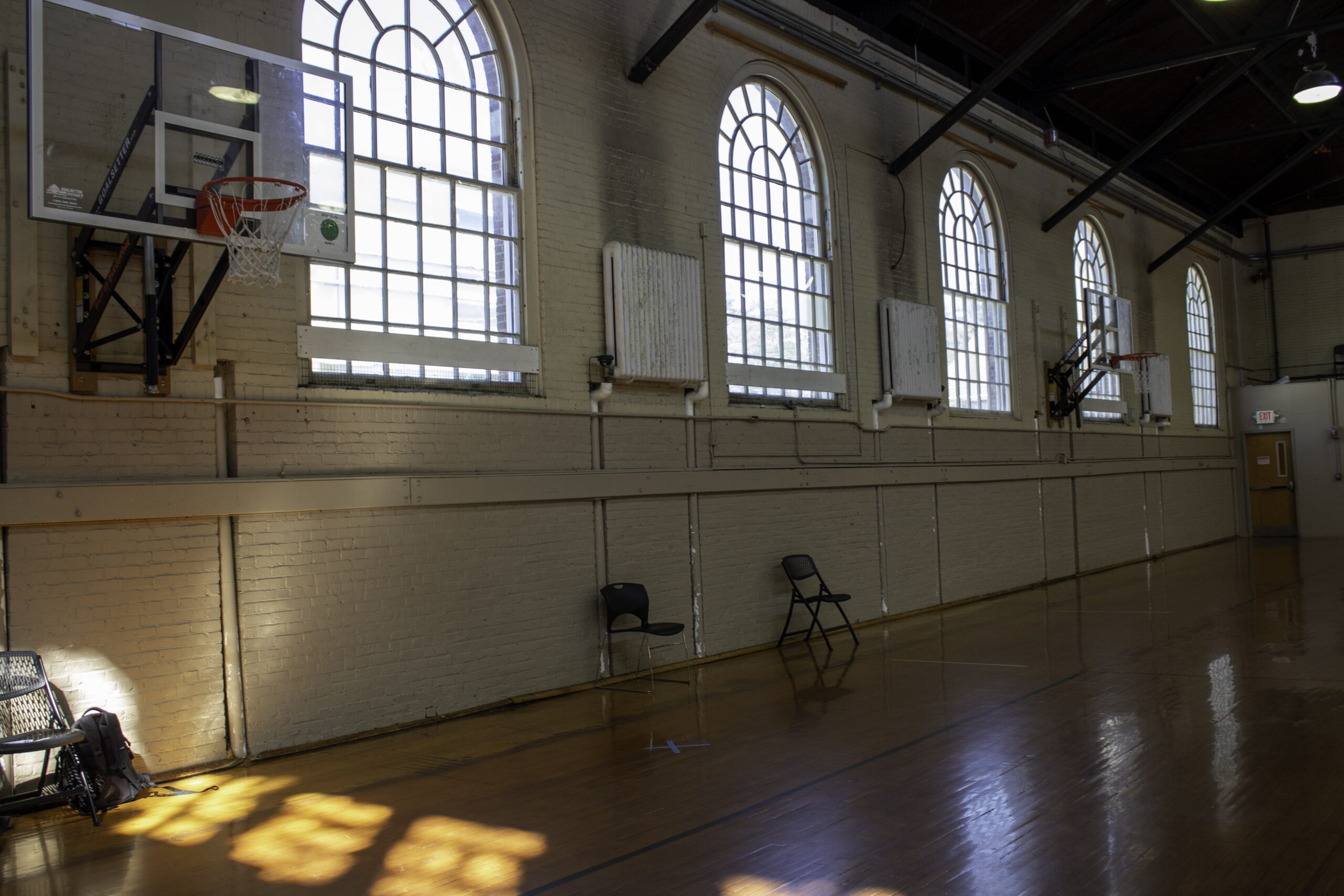What’s in a name: Sargent Gymnasium
May 2, 2025
 Janet Briggs
Janet BriggsAscending past the Polar Bear statue to the entrance of Sargent Gymnasium, the echoes of bouncing balls guide you to a vast room patterned by an expansive matrix of court lines. Sargent is a dynamic space hosting a variety of student sports teams throughout the year, including varsity and intramural basketball, the fencing team and the ultimate frisbee teams. Sometimes, the space is even converted into a makeshift dance studio.
Sargent was named after Dudley Sargent, a gymnastics coaching recruit who later became a student of the College and who helped establish indoor exercise at Bowdoin. Beyond attaining his degree in 1875, Sargent established a legacy of promoting physical education in New England at both Yale University and Harvard University and even started the Sargent School of Physical Training in Cambridge, Mass.
The title of Sargent Gymnasium originally belonged to a structure now utilized as the primary heating plant for Bowdoin. (Today, Sargent is located within Smith Union, and has been there since 1913.) The original complex, which was constructed in 1886, redefined exercise for the student body. Although physical activity is now widely deemed a staple of a healthy lifestyle for young adults, Sargent’s first location was established in the decades following an era when indoor exercise was widely considered an “ungentlemanly” practice for men who attended college in the United States and an overall obstacle to the ideal learning environment.
When, under the leadership of President William De Witt Hyde, the College was prepared to erect its own gymnasium, Sargent advocated for the project. Other influential figures in the history of sports at Bowdoin, like Frank N. Whittier, class of 1885, also helped establish academic requirements for activities in the building, such as classes in boxing and hygiene.
During a period when Collegiate Gothic style was the predominant architectural design at Bowdoin, the architect behind Sargent Gymnasium, Charles Collens, opted for Colonial Revival architecture. Collens argued the style would honor the College’s New England roots. At the entrance to Sargent, characteristics like a triangular pediment and classical door define the building’s façade.
Today, the College no longer demands that all students take physical education courses to graduate, but community members still take advantage of various opportunities in Sargent for their own leisure and fitness.
Sonia Katahdin ’28, who is enrolled in an art history course dedicated to the study of material culture, has expressed interest in Sargent’s unique position on campus in her course research.
“I have a lot of interest in historical buildings. I’ve been making a documentary about the history of Howell House [for an art history course], and the architect, Arnold Berton, did architectural work for the original Sargent Gymnasium, so that has taken me a little bit into this neck of the woods,” Katahdin said.
With its direct location above both the Mail Center and the Bowdoin Music Collective, its presence has wide-ranging impacts on student life.
Maya Funez ’28, who is a member of the student band Pariah and frequently utilizes the music practice rooms, noted that she sometimes feels frustrated with the upstairs noise from Sargent.
“If we’re songwriting, it’s hard to focus with the noise, assuming we haven’t already turned on all our gear,” Funez said. “For the most part, it’s just loud.”
Current students who use Sargent have expressed their desire for modifications to the space in years to come. Alex Krauss ’28, a member of the fencing, co-ed volleyball and intramural pickleball clubs, has suggestions for how to improve Sargent Gymnasium.
“It would be cool if there were pickleball lines or a new paint job,” Krauss said.
With the current campus layout, Sargent is also a frequent point of comparison with newer facilities on campus, like Morrell Gymnasium, a sports complex completed in 1965 that hosts the varsity basketball and volleyball teams. However, students still appreciate Sargent’s role in the day-to-day athletic activities of the community.
“I think Sargent is a great alternative to Morrell Gymnasium, and I’m glad we have it on campus,” Krauss said.

Comments
Before submitting a comment, please review our comment policy. Some key points from the policy: